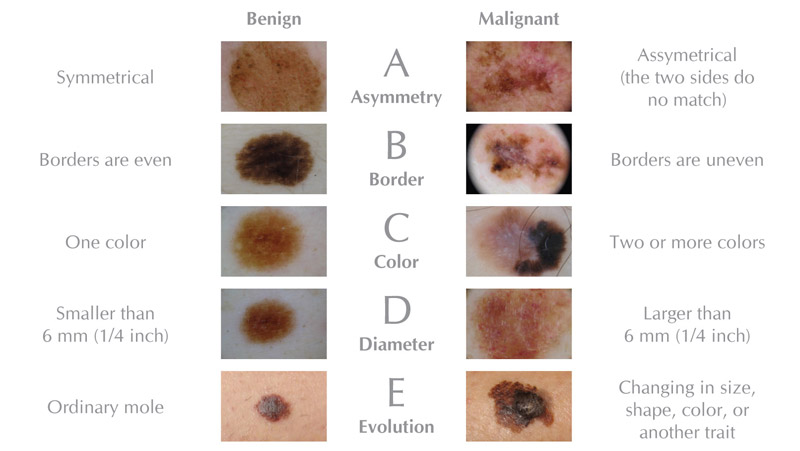Understanding the ABCDEs of Melanoma: Your Complete Guide to Early Detection and Prevention
Melanoma is a serious and potentially deadly form of skin cancer, but early detection can dramatically improve your chances of successful treatment. By learning the ABCDEs of melanoma, you can recognize warning signs early and seek prompt medical attention.
What is Melanoma?
Melanoma is a type of skin cancer that develops when melanocytes, the cells that give skin its color, start growing uncontrollably. Although often associated with sun exposure, melanoma can appear anywhere on the body—even in areas not typically exposed to sunlight. Early detection is critical, as melanoma is highly treatable when caught in the initial stages.
The ABCDEs of Melanoma
The ABCDE method is a straightforward guide to identifying suspicious moles and skin lesions:
A – Asymmetry: A mole or lesion with halves that don’t match in appearance could be melanoma. Benign moles tend to be symmetrical.
B – Border: Look for uneven, scalloped, or notched borders. Non-cancerous moles typically have smooth, clearly defined edges.
C – Color: Multiple colors or uneven shades within a single mole—such as brown, black, tan, red, white, or blue—are warning signs. Healthy moles usually have one consistent color.
D – Diameter or Dark: Melanomas are often larger than 6mm (about the size of a pencil eraser). However, smaller lesions that appear darker than surrounding moles should also be checked.
E – Evolving: Any mole or lesion that changes in size, shape, color, or begins showing symptoms such as itching, bleeding, or crusting requires immediate attention.

The Ugly Duckling Sign: An Additional Melanoma Detection Strategy
Another effective method to identify melanoma is the “Ugly Duckling” sign. This involves looking for any mole or lesion distinctly different from others on your skin in size, color, or shape. If a mole stands out significantly, it should be evaluated by a healthcare provider.
Important Facts About Melanoma:
- Melanoma frequently develops on women’s legs and men’s trunks but can occur anywhere, including hidden areas like between toes, under fingernails, and even the soles of feet.

- Approximately 70-80% of melanomas appear on previously normal-looking skin.
- Early detection boosts survival rates dramatically—up to 99% when melanoma is caught early, but significantly lower if it spreads.
Tips to Reduce Your Melanoma Risk:
- Use broad-spectrum sunscreen (SPF 30 or higher), reapplying every two hours when outdoors.
- Wear protective clothing, including long sleeves, pants, wide-brimmed hats, and UV-blocking sunglasses.
- Avoid peak sun exposure hours (usually 10 AM to 4 PM).
- Avoid tanning beds, which significantly increase melanoma risk.
- Schedule annual professional skin exams with your dermatologist for comprehensive screenings.
Conducting Effective Monthly Skin Checks:
- Perform monthly self-examinations in a well-lit room with a mirror, examining your entire body head-to-toe.
- Record findings on a mole map or keep detailed notes of any changes.
- Pay special attention to areas like scalp, nails, ears, back, and between fingers and toes.
When Should You See a Doctor?
Consult a healthcare professional immediately if you notice:
- Changes consistent with ABCDE criteria.
- Any new or unusual mole or lesion.
- Persistent sores or skin growths that don’t heal.
- An “ugly duckling” mole that differs significantly from surrounding moles.
Granville Primary Care is dedicated to helping you maintain healthy skin through proactive management and early detection. Schedule your appointment today for professional skin assessment and peace of mind.



